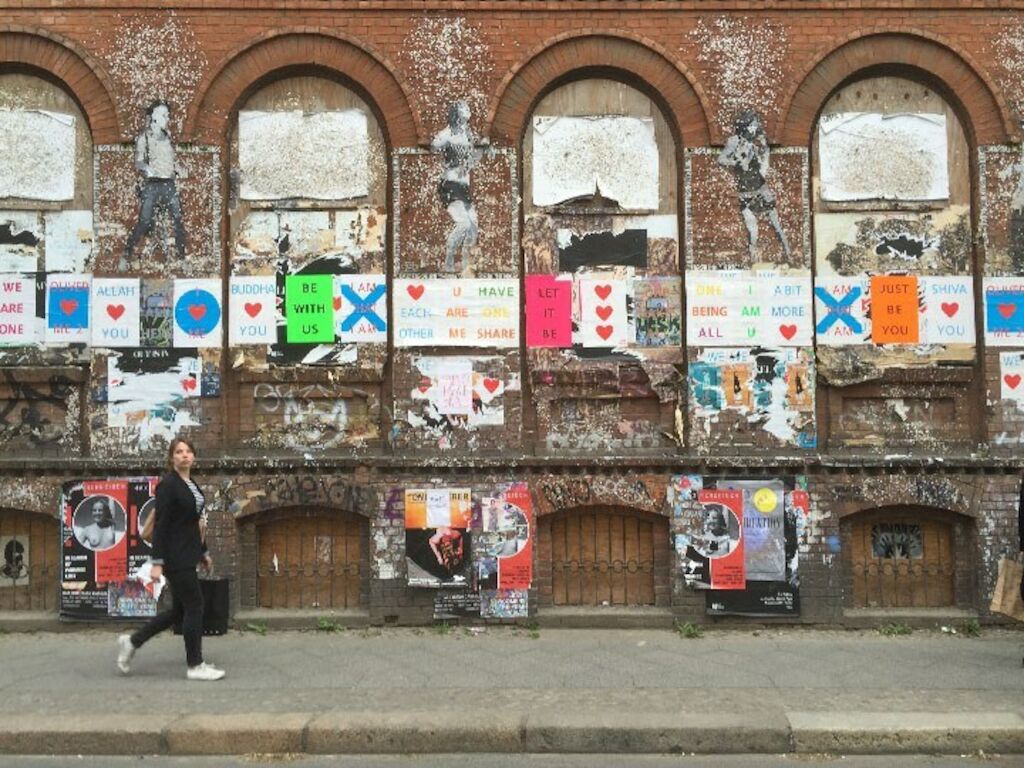Have you already taken a risk today? How about a little challenge? Maria Giudice, author of Rise of the DEO, asked this of the audience during her keynote speech at TYPO Berlin 2016: Beyond Design.
“Face the person next to you, the person you don’t know. Introduce yourself. And now hug the heck out of that person for ten seconds.” Whoever followed her instructions just made the first step toward becoming a DEO — a design executive officer.
When we’re asked to do something uncomfortable, something risky, the rational part of our brain gets pushed aside. Instead, the intuitive and creative part takes over. It creates mandatory conditions for innovation and trains the brain to think in unusual ways. According to Giudice, this is one essential aspect that distinctly differentiates DEOs from traditional business leaders.
Furthermore, the success of all businesses, Giudice says, lies in people — and how they can make powerful, meaningful connections to one another. It doesn’t matter how many awards someone has won, what the job title says, or how many years someone’s been working in business. Instead, when people feel that they’re treated like equals, that’s when great things can happen. Therefore: Trust your co-workers abilities. And meet people right where they are in life.
Contrary to what the name might suggest, a DEO does not necessarily have to be a trained designer. So, what makes a DEO a DEO? Giudice identifies five essential points to keep in mind, or rather to follow:
- Change your mindset — about design and designers
Design is not about things. It’s not a noun. Instead, it’s an active word. It means to participate, ideate, co-create, facilitate, communicate, and much more. To design means to embrace change, which again demands leadership.
Today’s leaders must not be producers of artifacts and deliverables but designers of change. And the best ideas and solutions come from multidisciplinary teams. In this context, designers must give up owning the word design and keeping it all to themselves. Treat your peers and workers as co-creators.
- Value we, not me
Many designers never went to art school. So it’s important to recognize people based on their own individual contributions. We live in a culture of “we,” where nothing can be created without collaboration, cooperation, and teamwork. Therefore: Celebrate diversity! Of work and life experience, discipline and area focus, gender and ethnicity, and point of view. And keep a balanced ratio of rookies to experienced performers. Because diverse teams are more efficient and innovative than those lacking diversity.
- Put people first
A truly human-centered organization puts people first. Form your intuition by understanding real-life experiences and circumstances. Step into other people’s shoes. Live positivity. Come to work with a positive attitude every single day. Nine out of ten people say they’re more productive when they’re around positive people. And last but not least: Get your hands dirty. The more you can stay involved and closer to the craft, the more respectful and relevant you will be to the people around you. The important thing is to stay curious.
- Champion creative culture — and have fun
The average US citizen spends 90,000 hours at work over their lifetime. So you better enjoy coming to work every day! Creativity and innovation need to be baked into the culture. We are all born creative. The creative part of our brain just needs to get ignited through practice.
And if you’ve ever been told your desk is too messy, this is your moment to shine: promote creative chaos. A report published recently found that a cluttered workspace can enhance problem-solving skills and boost efficiency.
Remember to take breaks, too. Employees who take breaks every 90 minutes report a 30 percent higher level of focus than those who take no breaks during the day. They also report 50 percent greater capacity to think creatively.
- Iterate and evolve, and be open to change
Any journey is never truly finished. In order to keep an innovative culture, you have to keep the company in a constant state of iteration and reinvention. Move forward. And fail repeatedly — until you find something that sticks. Shit happens. DEOs like Mark Zuckerberg understand that vision without execution is hallucination. They know that they will ultimately be judged by what they do, not by what they dream. Ideas are only good if you can bring them to life. So have the courage to take smart risks every day. And keep in mind GSD: get shit done.
Finally, be your authentic self. Have the courage to be different and the confidence to think differently. And cause a little trouble. Because it’s good for you. And now go and find your own stage.
This article is a summary of the keynote speech by Maria Giudice at TYPO Berlin 2016, Europe’s biggest design conference. Giudice is the author of Rise of the DEO: Leadership by Design and a successful Silicon Valley entrepreneur.
Andreas Bannwart is a copywriter and conceptioner at MetaDesign Zürich. He attended TYPO Berlin 2016 in May.
